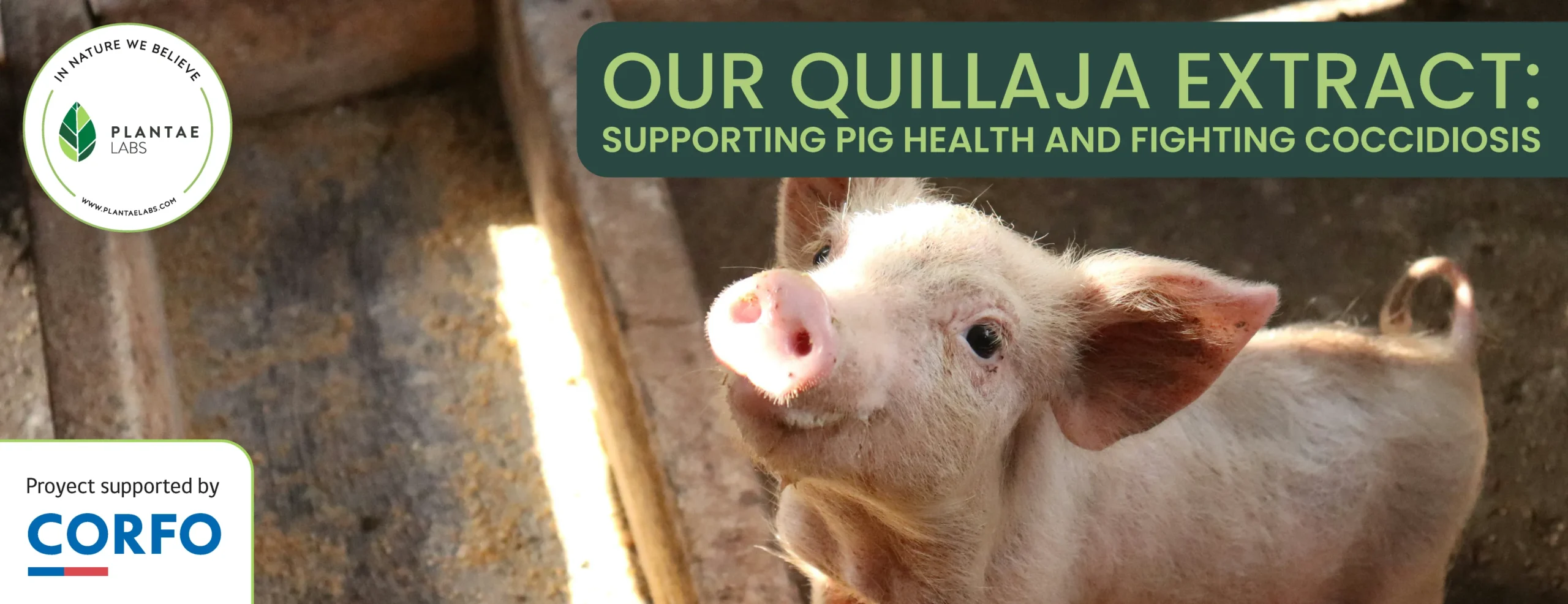At Plantae Labs, we have developed a proprietary blend that incorporates Quillaja saponaria, a plant known for its beneficial properties in animal nutrition. This formulation aims to address common challenges in swine production, particularly during periods of increased susceptibility to infections, such as those caused by Cystoisospora suis (Coccidiosis). This post discusses the potential benefits of our Quillaja extract, specifically our product Feed Sap S15, on swine health and performance.
Common Intestinal Diseases in Pigs
Effective nutrient utilization, influenced by individual variability and management strategies, plays a crucial role in swine production profitability and efficiency. Both profitability and efficiency rely heavily on technical performance, which is closely linked to pig health and welfare. However, maintaining optimal health can be challenging, as pigs are susceptible to various intestinal diseases.
Diarrhea, the most prevalent clinical sign, is commonly acquired via the oro-fecal route, with swine coccidiosis posing a particular concern, especially for nursing piglets.
As we explore the impact of our Quillaja formulation on intestinal health, we will delve deeper into the implications of coccidiosis and how it can affect pig performance.
Coccidiosis in pigs
Coccidiosis in pigs is primarily caused by the protozoan parasite Cystoisospora suis, which mainly affects very young, confinement-raised piglets. The infection manifests through clinical signs such:
- Non-hemorrhagic diarrhea
- Dehydration
- Weight loss
Diarrhea results from damage inflicted on the small intestinal wall, often leading to secondary bacterial infections that exacerbate the disease.
At the microscopic level, C. suis invades the intestinal epithelium, causing villous atrophy and crypt hyperplasia. Macroscopically, infected piglets may exhibit thin, pale intestines with visible lesions and inflammation. The image below illustrates the typical progression and impact of coccidiosis in swine, highlighting both cellular and gross changes associated with this parasitic infection.
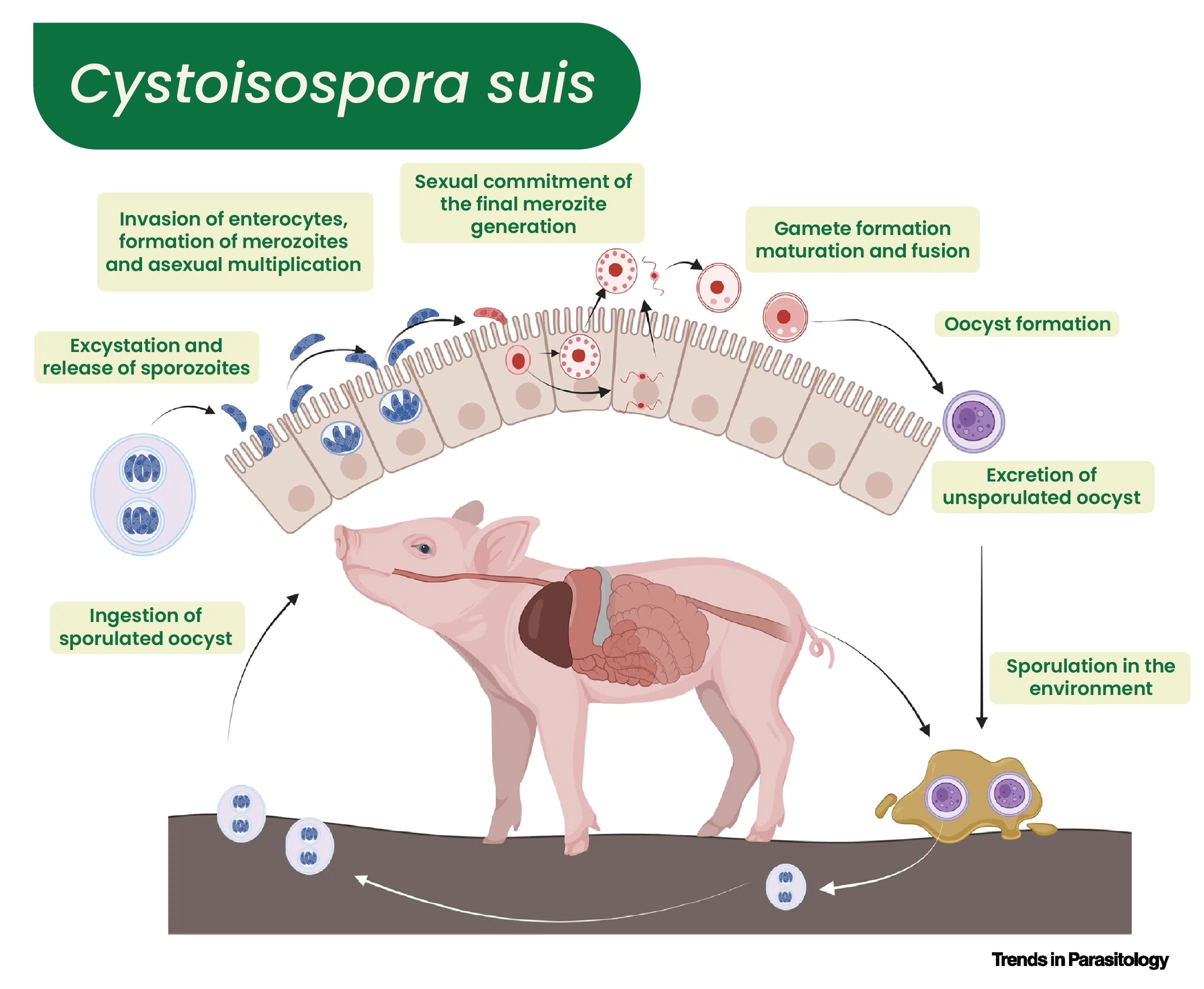
The Role of Antibiotics in Swine Production
Antibiotics play a crucial role in swine production, particularly in managing intestinal diseases and promoting overall health. A comprehensive study by Sarrazin et al. in 2018 conducted on farrow-to-finish farms across nine European countries revealed that most antibiotics are administered at weaning, followed by nursing piglets. The primary reasons for antibiotic use include treating respiratory issues, intestinal diseases, and general health concerns.
While antibiotics are effective treatments against infections, their overuse can drive antibiotic resistance and the development of new resistant strains. This underlines the need for safer alternative solutions to support animal health. Given strong evidence of animal-to-human transmission of antimicrobial resistance (AMR) and that antimicrobial usage is the main driver for AMR selection, reducing veterinary use of antibiotics is essential.
Natural alternatives, such as Quillaja saponaria, offer promising support for intestinal health and can enhance performance parameters like body weight gain (BGW) and feed conversion ratio (FCR), potentially decreasing the reliance on antibiotics.
Impact of Quillaja extract on Performance and Intestinal Health
The supplementation of Quillaja extract, particularly through products like Feed Sap S15, has shown promising results in enhancing both performance and intestinal health in pigs.
To contextualize the performance of our Quillaja formula, results are compared with both a non-treated control group and a leading antibiotic widely used in the market for managing coccidiosis. This setup highlights the impact on piglet health and growth performance, showcasing our formula’s potential as a sustainable alternative.
Performance Enhancement
Research indicates that pigs supplemented with Feed Sap S15 at a dosage of 60 grams per ton experience significant improvements in average daily gain (ADG) and feed conversion ratio (FCR). These enhancements are attributed to the saponins’ ability to optimize nutrient absorption and improve gut health. The graph below illustrates the results for ADG, showcasing the benefits of our Quillaja extract supplementation compared to non-supplemented groups.
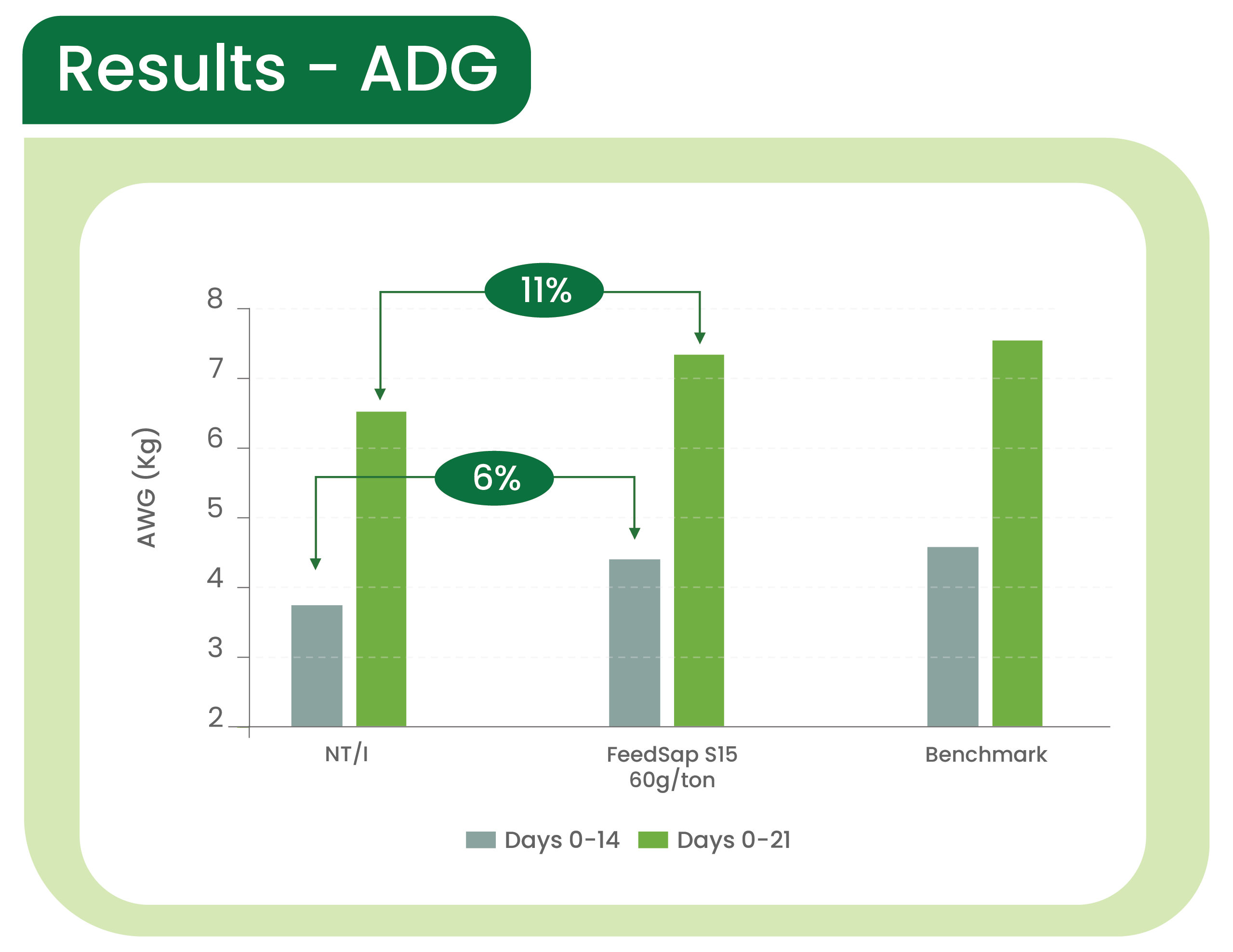
Feed Conversion Ratio Improvement
Feed Sap S15 supplementation also supports improved feed conversion ratio (FCR), an essential metric in swine production. By enhancing nutrient utilization, our Quillaja extract helps pigs achieve growth with less feed, translating to more efficient weight gain. The following graph highlights the positive impact of Quillaja supplementation on FCR, further underscoring its role in boosting overall production efficiency.
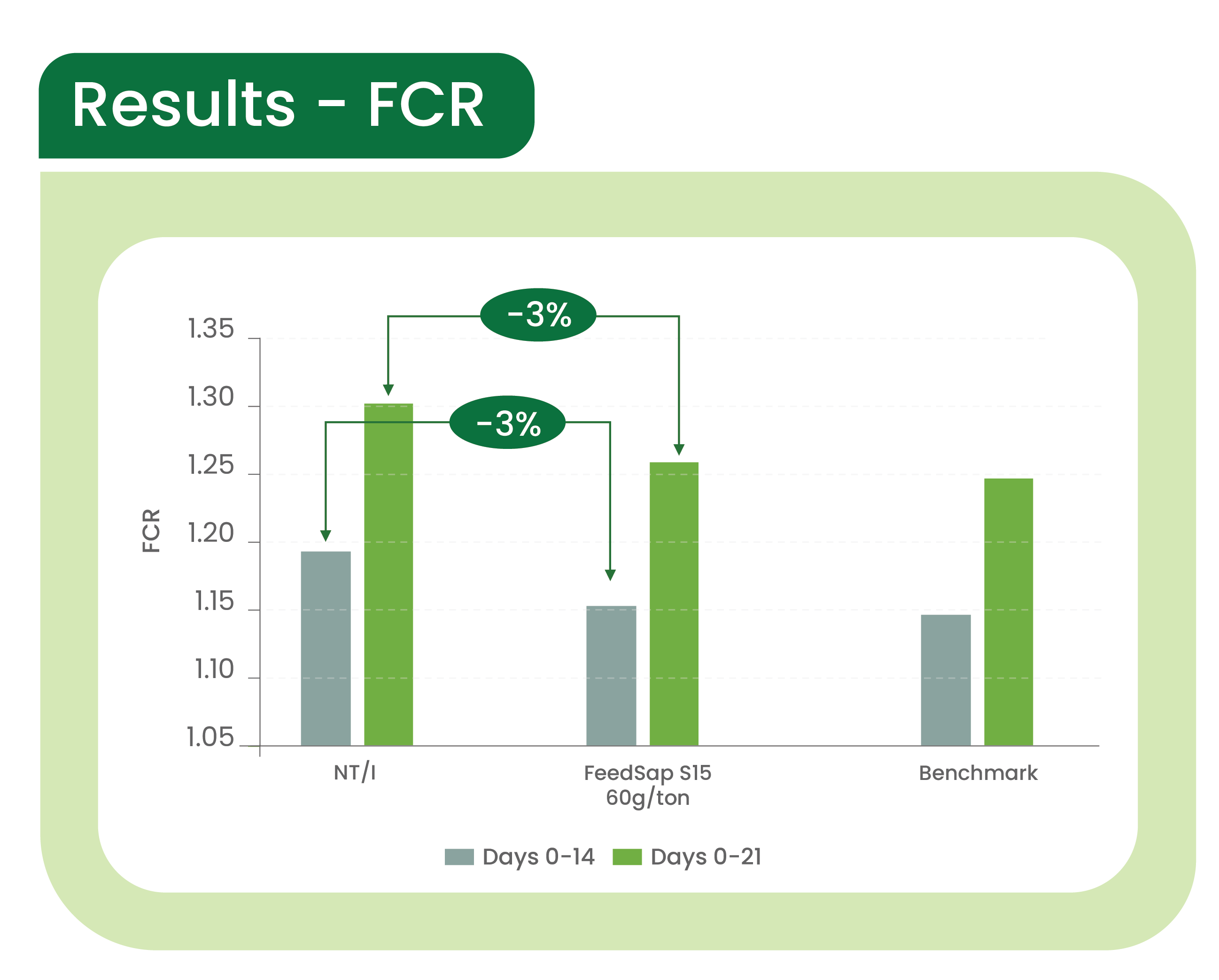
Coccidiosis Challenge
In a controlled trial assessing the impact of Quillaja extract during a Cystoisospora suis challenge, piglets were supplemented with Feed Sap S15. Results indicated that piglets receiving a dosage of 60 grams per ton not only demonstrated improved average weight gain (AWG) and FCR but also exhibited a significant reduction in oocyst counts (OPG) compared to the negative control group. The graph below illustrates the results for oocyst counts, further highlighting the effectiveness of Quillaja saponins in mitigating intestinal infections.
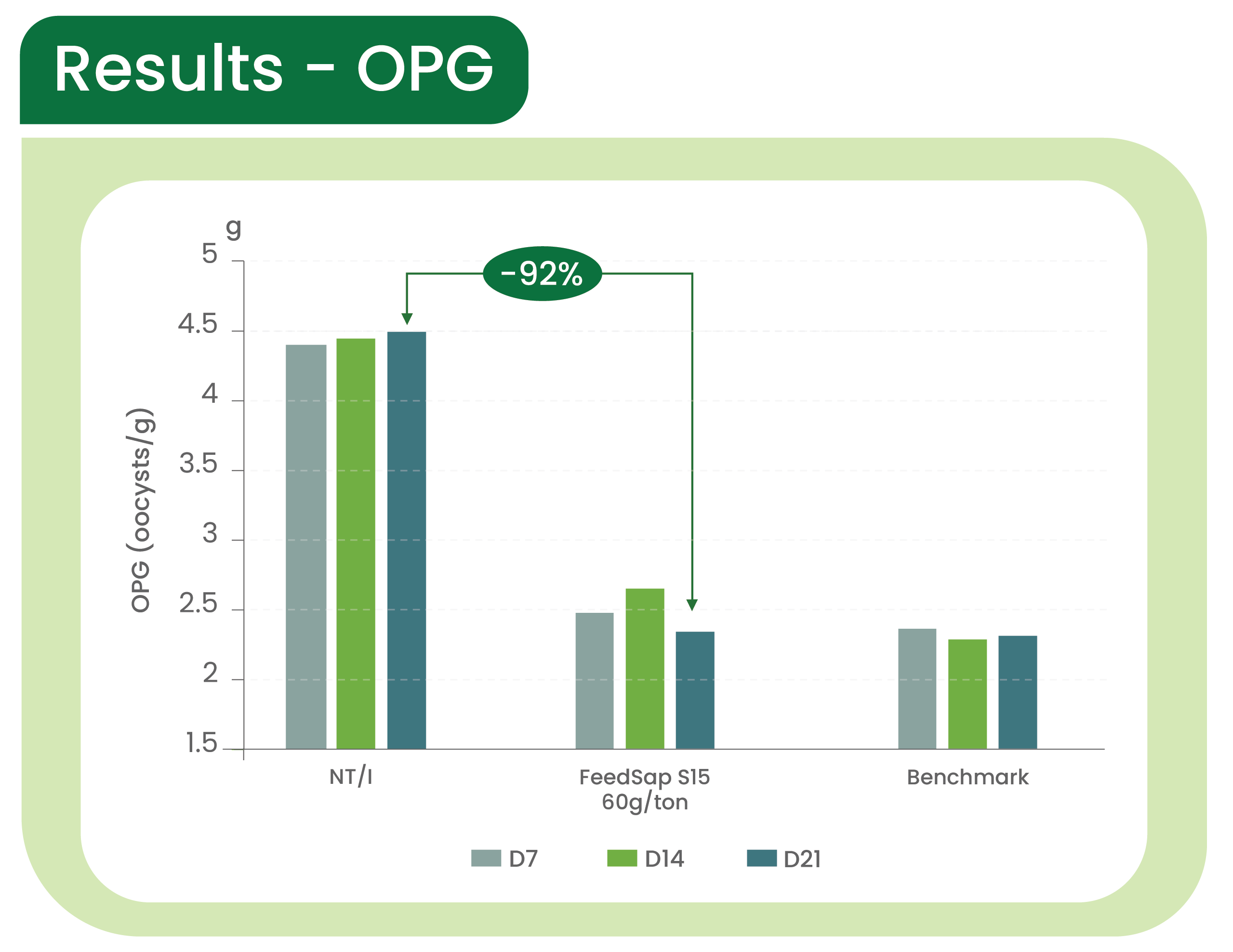
These findings suggest that incorporating Quillaja extract into swine diets can enhance performance, improve intestinal health, and reduce environmental impacts, making it a valuable addition to modern swine production practices.
Harnessing Nature for Better Pig Performance
Our Quillaja Extract presents a viable alternative to antibiotics in swine production, particularly in addressing challenges like Cystoisospora suis infections. The evidence demonstrates that Quillaja saponins enhance growth performance and improve intestinal health in pigs, offering an innovative approach to sustainable swine production. As the industry aims to reduce antibiotic use and decrease antimicrobial resistance, integrating Quillaja into feeding strategies offers a promising advancement in swine health management. Beyond supporting growth, Quillaja shows potential as an effective control strategy for parasitic diseases like coccidiosis in swine.
Explore how Feed Sap S15 can support your swine production goals today! For more information, feel free to reach out to us at www.plantaelabs.com/contact/
Key Terms:
Average Daily Gain (ADG): A measure of the weight gain of pigs per day, often used to assess growth performance.
Feed Conversion Ratio (FCR): A ratio that measures the efficiency of converting feed into body weight gain; a lower FCR indicates better feed efficiency.
Oocyst Per Gram (OPG): A measurement used to quantify the number of oocysts (the infectious stage of coccidia) in feces, important for assessing the severity of infection.
Coccidiosis: An intestinal disease caused by protozoan parasites, notably affecting piglets, leading to significant health issues.
Digestibility: The extent to which feed components are broken down and absorbed by the animal, influencing overall nutrition.
References:
- Feix, A. S., et al. (2024). Cystoisospora suis. Trends in Parasitology, 40(7), 647-648. Used for coccidiosis flow image. https://www.cell.com/trends/parasitology/fulltext/S1471-4922(24)00082-5
- Iowa State University Veterinary Medicine. Coccidiosis in Swine. Retrieved from https://vetmed.iastate.edu/vdpam/FSVD/swine/index-diseases/coccidiosis
- Joachim, A., Schwarz, L., Hinney, B., Ruttkowski, B., Vogl, C., & Mundt, H. C. (2014). Which factors influence the outcome of experimental infection with Cystoisospora suis? Parasitology Research, 113, 1863–1873. https://doi.org/10.1007/s00436-014-3834-8
- Sarrazin, S., Joosten, P., Van Gompel, L., Luiken, R. E. C., Mevius, D., Wagenaar, J. A., Heederik, D., & Dewulf, J. (2018). Quantitative and qualitative analysis of antimicrobial usage patterns in 180 selected farrow-to-finish pig farms from nine European countries based on single batch and purchase data. Journal of Antimicrobial Chemotherapy, 74(3), 807–816. https://doi.org/10.1093/jac/dky503
